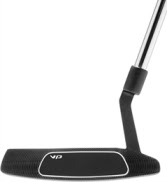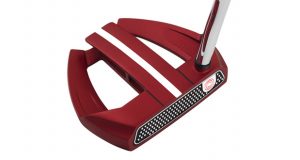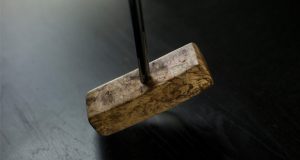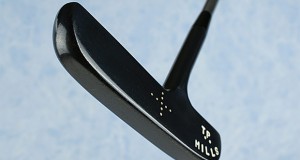 PutterZone.com today launches a new series called Putter Fitting Tips, in which we demystify putter fitting jargon to give you practical information for raising your game.
PutterZone.com today launches a new series called Putter Fitting Tips, in which we demystify putter fitting jargon to give you practical information for raising your game.
We begin with “putter lie angle,” which is the angle at which the shaft intersects the horizontal sole of the putter.
For visual reference, consider that a croquet mallet has a lie angle of 90 degrees, because the shaft is perpendicular to the head. On a putter, however, the shaft intersects the head at a shallower angle. A typical lie angle for a putter ranges from 70 to 72 degrees.
When you see a golfer address a putt with the toe of the putter raised off the ground, that’s a lie angle issue, because the lie angle of that putter doesn’t properly fit the physique or mechanics of that particular golfer. When the lie angle is properly fitted, the sole of the putter will be flush with the ground, with neither the toe nor heel sticking up.
An improper putter lie angle can cause persistent performance problems with pushing or pulling putts.
There is no “right” lie angle. The lie angle that works for you might be the wrong lie angle for someone else. Again, it depends on your own personal physique and mechanics, and overall approach to putting.
Some companies, such as SeeMore Putter Company, offer custom lie angle options at the point of purchase. Rife Putters makes several models with a special LieAline technology, whereby you can safely and easily change the lie angle of the putter. But most putters come with a fixed lie angle, and if you want to change it, you need to find a trained professional with the right bending tool.
While 71 degrees is probably considered the “average” lie angle, there is considerable variation in the marketplace. For example, the Yes! Dawn putter comes with a lie angle of 72 degrees; the Mizuno Bettinardi Black Carbon putter comes with a lie angle of 71 degrees; and the Cleveland BRZ bronze putter comes with a lie angle of 70 degrees.
So how do you apply this information to your own game? For starters, make sure that the lie angle on your current putter isn’t out of whack. Have a friend watch you putt and tell you if the toe or heel is sticking up.
If the toe is up, you likely need a flatter (smaller number) lie angle. If the heel is up, you probably need a more upright (higher number) lie angle—assuming that you don’t plan to make any drastic changes to your putting setup anytime soon.
Similarly, if you are in the market for a putter, pay attention to the lie angles of the putters you are sampling. Of course, you can always have a putter’s lie angle adjusted, as long as you don’t mind finding and paying someone to do it.
The bottom line is that lie angle can have a significant impact on your putting results, so keep a close eye on it.
P.S. For the complete scoop on putter fitting, check out Putter Perfection: The Groundbreaking Guide to Finding the Right Fit for Your Game by Sean Weir, editor of PutterZone.com.
 PutterZone – Best Putter Reviews
PutterZone – Best Putter Reviews




